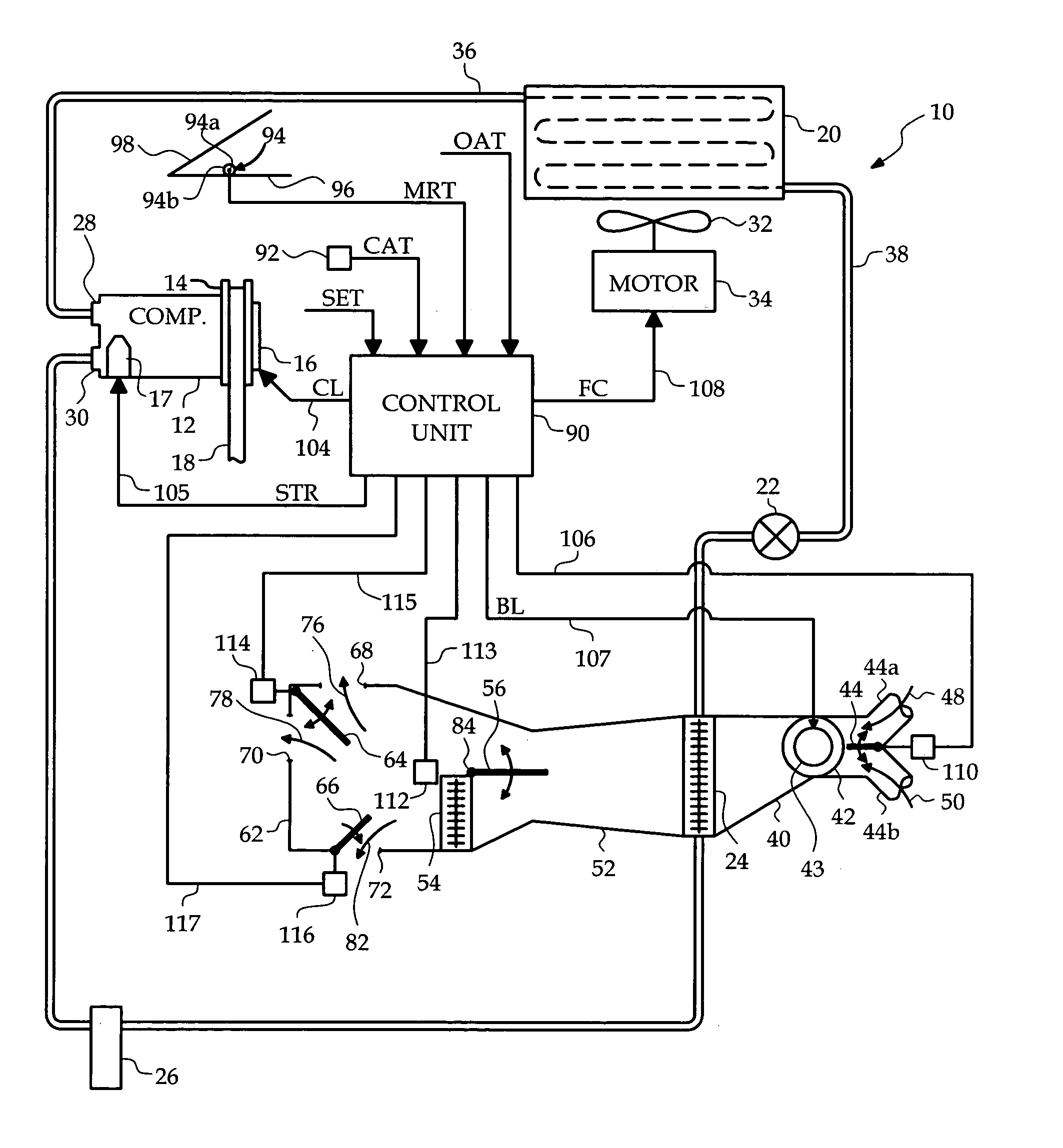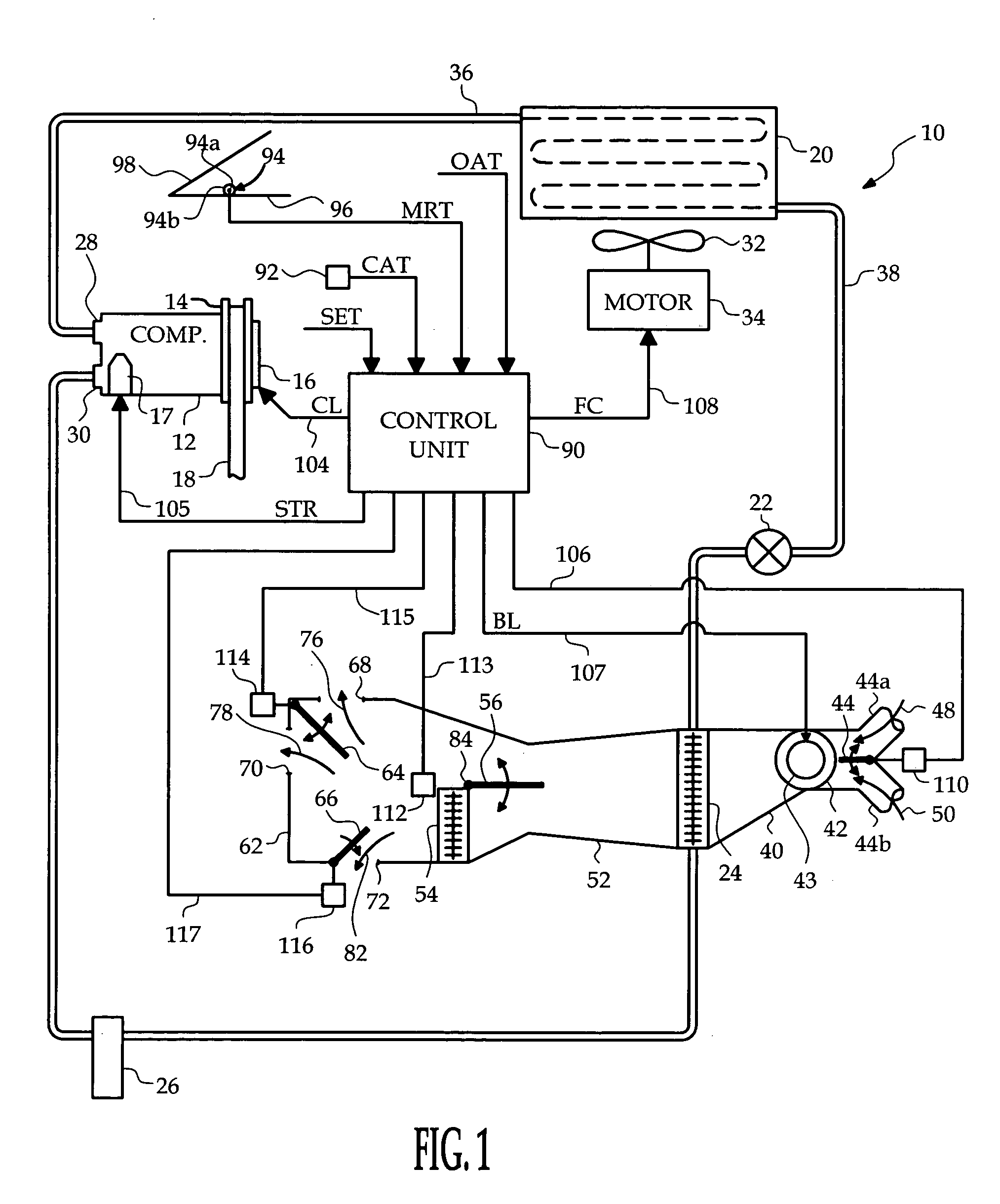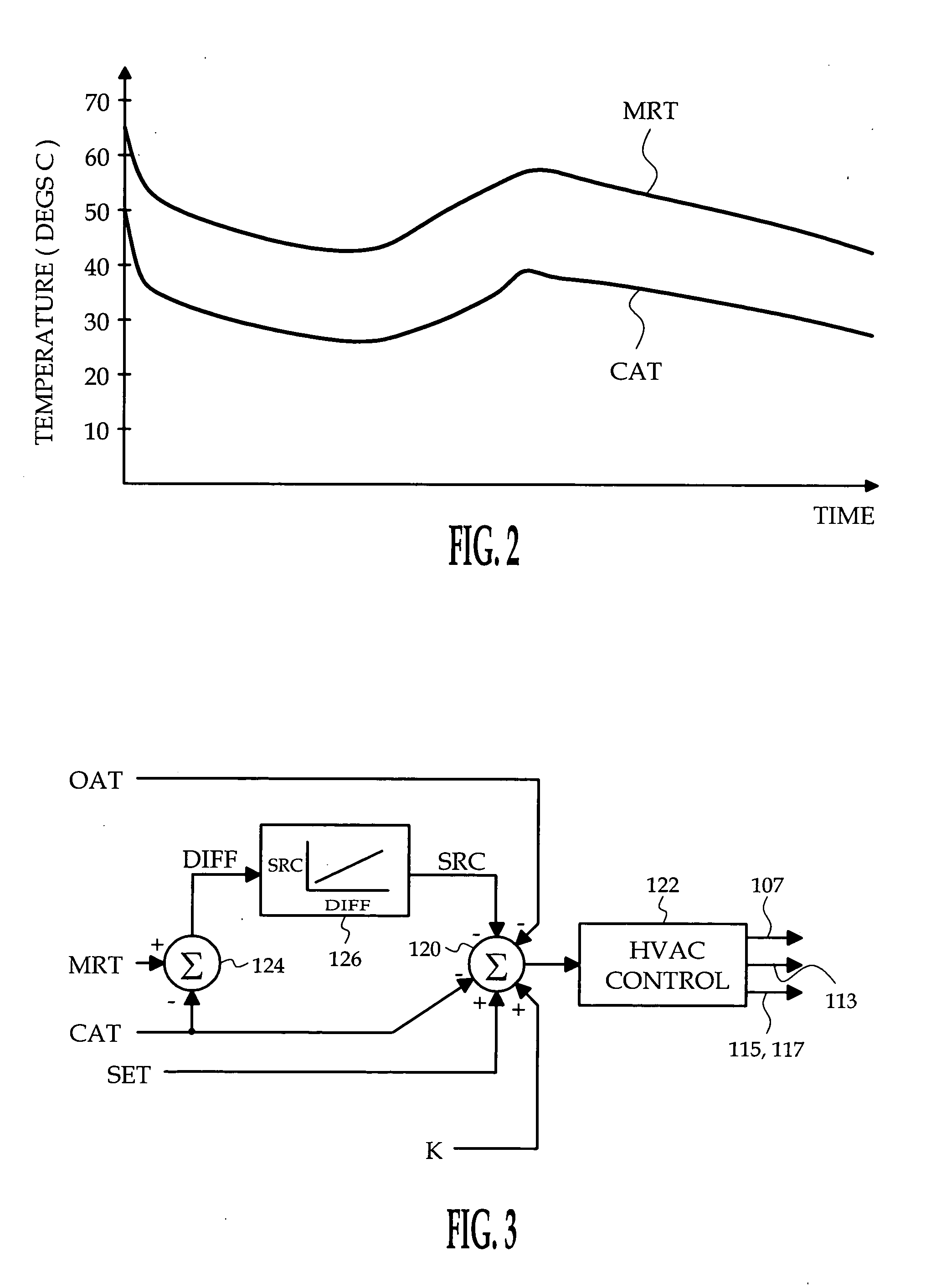Solar radiation compensation method for a vehicle climate control
a technology for climate control and solar radiation, applied in lighting and heating apparatus, ventilation systems, heating types, etc., can solve the problems of not necessarily providing a true indication of solar load, and the cost of photovoltaic sensors is relatively high compared to mass-produced devices, so as to increase the cooling capacity of the climate control system
- Summary
- Abstract
- Description
- Claims
- Application Information
AI Technical Summary
Benefits of technology
Problems solved by technology
Method used
Image
Examples
Embodiment Construction
[0008] Referring to FIG. 1, the method of this invention is described in the context of an automatic climate control system, generally designated by the reference numeral 10. In the illustrated embodiment, the system 10 includes a variable capacity refrigerant compressor 12 having a stroke control valve 17 that is electrically activated to control the compressor pumping capacity. The compressor input shaft is coupled to a drive pulley 14 via an electrically activated clutch 16, and the drive pulley 14 is coupled to a rotary shaft of the vehicle engine (not shown) via drive belt 18, so that the compressor 12 can be turned on or off by respectively engaging or disengaging the clutch 16. In systems utilizing a fixed displacement compressor instead of the variable displacement compressor 12, the compressor pumping capacity may be regulated by cycling the clutch 16 on and off. The system 10 further includes a condenser 20, an orifice tube 22, an evaporator 24, and an accumulator / dehydrat...
PUM
 Login to View More
Login to View More Abstract
Description
Claims
Application Information
 Login to View More
Login to View More - R&D
- Intellectual Property
- Life Sciences
- Materials
- Tech Scout
- Unparalleled Data Quality
- Higher Quality Content
- 60% Fewer Hallucinations
Browse by: Latest US Patents, China's latest patents, Technical Efficacy Thesaurus, Application Domain, Technology Topic, Popular Technical Reports.
© 2025 PatSnap. All rights reserved.Legal|Privacy policy|Modern Slavery Act Transparency Statement|Sitemap|About US| Contact US: help@patsnap.com



